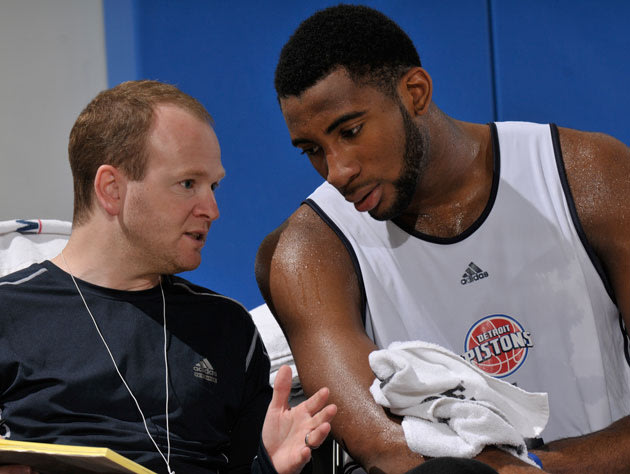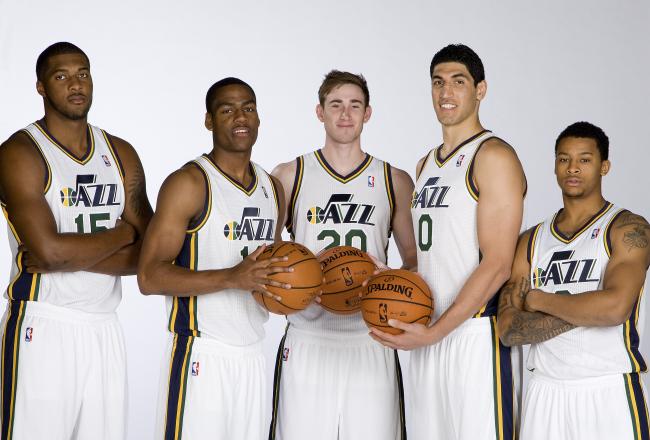Which brings me to my number one gripe of the past week: Charles Barkley has successfully infiltrated March Madness. I didn't think it was possible, but he has done it. Barkley is everywhere; commercials, pregame, halftime. And just when I think I'm beginning to cope with his uninformed views of the college game, he says something like this:
“I want these kids to stay in school longer because the NBA is worse than it’s ever been,” Barkley said. “It’s not good basketball. It’s frustrating for me to watch. These kids aren’t physically or emotionally ready to come and play against grown men.”
“Jabari Parker and Andrew Wiggins are supposed to be top-3 draft picks,” he continued. “They didn’t have very good games — and it’s just one game — but if they’re going to struggle against Mercer and Stanford, they’re really gonna struggle against grown men.”
Barkley's comments coincide with recent talks from Adam Silver that the NBA has plans to raise the age limit another year. As a fan of college basketball, I am not against the idea of damming up the NCAA talent pool a little more. It is true that Jabari Parker had a tough go against Mercer (including being benched for defense in key moments). And yes, Andrew Wiggins never looked close to comfortable against the Stanford defense.
But I still have a hard time believing Charles really believes what he says. Seriously, Parker and Wiggins do not belong in college basketball. The lack of spacing, the zone defense, the 35 second shot clock; several key aspects of the college game are completely different from what they will see in the pros, and, for the most part, disadvantageous to their styles of play. Sure, guys have left college too early in the past and flamed out. But many, many more have improved drastically in the NBA compared to where they were in college. What if Andre Drummond had stayed another year at UConn to watch Shabazz Napier chuck shots? What if Derrick Rose had decided to juggle another year of school with Conference USA life instead of dedicating every day to basketball with some of the best coaches in the world?
A troubling theory has arisen among those who believe the current NBA is "watered down". They believe that, for example, current Anthony Bennett (drafted as a freshman) is taking the spot of an older, more seasoned version of Anthony Bennett in the NBA. This is not true. Were Anthony Bennett not in the NBA right now, he would not be replaced by a better version of himself. He would, instead, be replaced by an older veteran or (more commonly) a younger player with less potential. Can you name some fringe players in the NBA right now that might have taken Bennett's spot? What about some players who have recently been signed to 10-day contracts? Here's a list of some: Chris Wright, Darius Johnson-Odom, Casper Ware, Chris Babb, DJ White. Very impressive. Glad we have those guys in the league (said no one ever). Basically, it all comes back to whether you believe players develop better in college or the NBA. I believe the latter, but am willing to concede that every case is different.
Money is the issue at hand here. Everyone except for potential draftees would benefit from an age limit raise. Owners, current players, and certainly, Adam Silver, would all stand to make a lot of money. If you think Wiggins and Parker have hype now, what would it be like after another full college season? I'm imagining parades on the streets of Philadelphia. Let's just say it will be interesting to see what settlement is reached. Here are a few speculative thoughts, if the limit were to be raised:
- How would the D-League be affected? David Stern saw it as a place for raw players to develop their games, but will there be a need with another year of weeding out at the college level? Or will some players jump ship early and go straight to the D-League for a year?
- Would college players have to be compensated for their extra year in school? Would rookie scale contracts be modified?
- Would the Players' Union step in?
We would need a time machine to know.
 |
| "Did you say you need a time ma-" |
Now, back to the struggles of Wiggins and Parker. I thought it would be interesting to look at high draft picks of yesteryear to see if any of them had also struggled on the big stage. I compiled the regular season and end-of-season tournament Player Efficiency Ratings (courtesy realgm.com and basketball-reference) of all draft picks from the last 8 years (the years where the freshman age limit in college has existed) that are still in the league. Here are a lot of graphs presenting the findings:
(Disclaimer: Admittedly, PER is a flawed statistics that favors rebounding big-men and does not do a good job of capturing defensive impact, but it was the best statistic available.)
This first graph compares the Median Season NBA PER of all players drafted after their freshman year with their PER in either the NCAA Tournament or the NIT. As we can see, Eric Gordon, Thaddeus Young, Deandre Jordan, and Andre Drummond all had poor postseason performances and still went on to have success in the league. As a reference, Parker's 2014 NCAA PER was 14 and Wiggins' was 11.5.
 |
| Sorry for the overlapping names, nothing I can do |
This graph shows that, as you may have guessed, overall season PER, with a correlation of 0.62, is a much stronger indicator of how a player will perform in the league, although it is not perfect (step your game up, Bennett!). This season, Parker had a PER of 19.14 and Wiggins, 17.06.
Now that we have the graphs for freshmen, I figured it would be interesting to look at the results for all draft classes. Here are the sophomores:
 |
| It appears that Sam Presti is able to see past postseason woes when making draft selections (see Harden and Westbrook) |
 |
| Otto Porter has to be the most forgettable 3rd Pick ever |
And the Juniors:
 |
| Who else was high on Wesley Johnson after this tournament? |
 |
| Steph Curry is ridiculous |
And, finally, the Seniors!!
 |
| Miles Plumlee's early season success this year wins the Most Random Thing of the Season Award |
 |
| I miss Brandon Roy |
In recap, we can learn a few things:
Now let's enjoy the Madness this weekend, and try not to be too hard on draft prospects for one bad performance.
- Some NBA prospects have performed poorly in the biggest moments, even in the Seniors group.
- The strongest predictors of NBA success is the Season PER of Freshmen and Juniors (small sample size and a lot of noise).
- As of now, Anthony Bennett and Otto Porter stand out as huge underachievers. Still, their data points come from very small samples and will undoubtedly improve in future years.
And now, a challenge:
Scroll back up and look at the names on the freshmen graphs. Now, try to pick out a few, let's say more than 10, that you can even debate have hurt the NBA by entering when they did.
Pretty tough, isn't it?
Pretty tough, isn't it?
So why the need for an age limit increase?
Now let's enjoy the Madness this weekend, and try not to be too hard on draft prospects for one bad performance.






